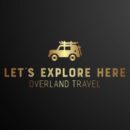Belgium / Koninkrijk België / Royaume de Belgique / Königreich Belgien – Let’s explore here
What’s it like in Belgium?
The population of Belgium is over 11½ million people (2024), with about one in five living in the capital, Brussels. The capital is often considered the heart of Europe, as it’s home to major international institutions like the European Union and NATO.
It’s quite a small country, about 1½ times the size of Wales, UK, making it one of the most densely populated countries in the world. The terrain mostly consists of plains, except for the Ardennes forest region in the south east. The highest point is Signal de Botrange in the east of the country, at 2,277 ft (694 m).
It’s is also famous for its medieval towns, stunning castles, delicious chocolate, world-renowned beer, and unique waffles.
Over the centuries, because of its location, it has been the battleground of European powers, earning the nickname ‘the Battlefield of Europe’. It has land borders with France, Germany, Luxembourg and the Netherlands.

A bit about the history of Belgium
Belgium has a complex history shaped by its position in western Europe and its diverse cultural influences.
Early History and Middle Ages
The region now known as Belgium was inhabited by Celtic tribes before becoming part of the Roman Empire in the 1st century BC. After the fall of the Roman Empire, it was controlled by various Germanic tribes, including the Franks. By the Middle Ages, the area was divided into several feudal states and part of the Holy Roman Empire.
Burgundian and Habsburg Rule
In the 15th century, Belgium was brought under the control of the Duchy of Burgundy. By the 16th century, the Habsburg dynasty took over, with the region becoming part of the Spanish Netherlands. In the 17th century, control passed to the Austrian Habsburgs, with Belgium remaining under foreign rule for much of its history.
Independence and Belgian Revolution
In the early 19th century, following the Napoleonic Wars, the region became part of the United Kingdom of the Netherlands. However, tensions between the French-speaking Walloons and Dutch-speaking Flemings, as well as religious differences, led to the Belgian Revolution of 1830. Belgium declared independence from the Netherlands and became a constitutional monarchy under King Leopold I.
World Wars
Belgium was neutral during World War I but was invaded by Germany in 1914. The war caused significant destruction, and Belgium played a crucial role in the Western Front. After the war, Belgium became a founding member of the League of Nations and later NATO. During World War II, Belgium was again invaded by Nazi Germany in 1940 and endured occupation until liberation in 1944.
Post-War and Modern Period
After World War II, Belgium underwent significant reconstruction and economic development. The country’s political system became more complex as tensions between the Dutch-speaking Flemish and French-speaking Walloons increased. This led to federalization in the 1990s, creating a federal state with distinct regions and linguistic communities.
Contemporary Belgium
Today, Belgium is a constitutional monarchy with a complex political structure, reflecting its multilingual and multicultural society. It plays a central role in the European Union and hosts key EU institutions in Brussels. Despite its successes, Belgium continues to face political challenges related to regional and linguistic divisions.
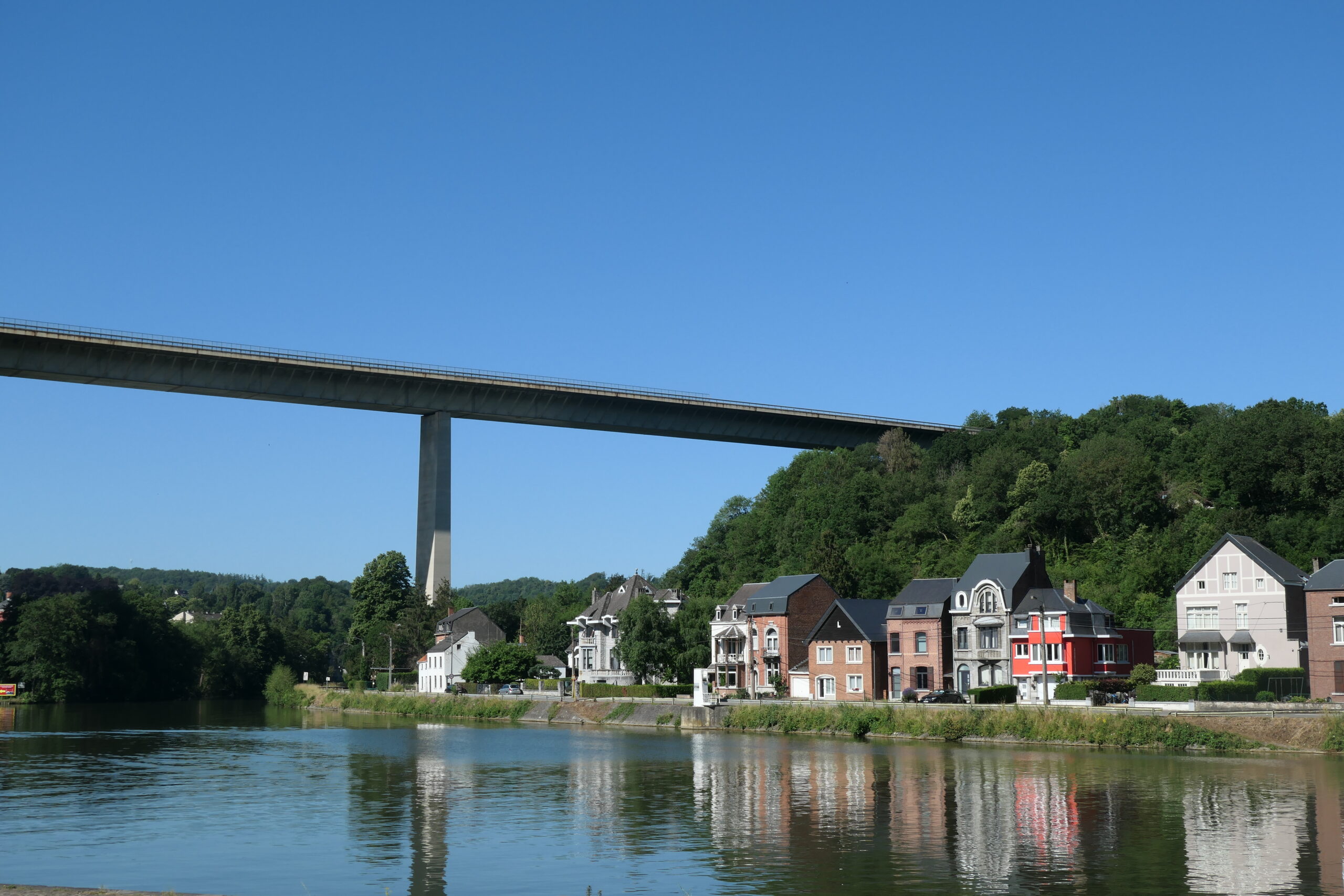
Belgium road trip
We’ve created a blog for our 2023 road trip to Belgium 😉
As this was close to the beginning of our monumental 25,000 mile (40,000 km) road trip across most of the countries in Europe, we didn’t spend masses of time in Belgium, particularly as we’ve been so many times before.
On our road trip through Belgium we travelled from northern France, avoiding all toll roads and motorways. We entered Belgium at Tournai and were shocked by the poor state of the minor roads in rich Belgium!
Our route took us alongside the French border, before heading inland towards Namur and across to fabulous Dinant in Wallonia, Belgium. We stayed in a decent campsite called Camping Le Roptai near Namur, which although it didn’t have many flat pitches, was great. The staff were friendly, despite online reviews stating otherwise! We liked it – highly recommended.
Our route took us from magnificent Dinant, with its brilliant rocky backdrop, via very wealthy neighbourhoods on to Bastone, which has a large WWII tank in the town centre! We then moved east on to magnificent, if poorly known about, Luxembourg.
Map of our road trip through Belgium
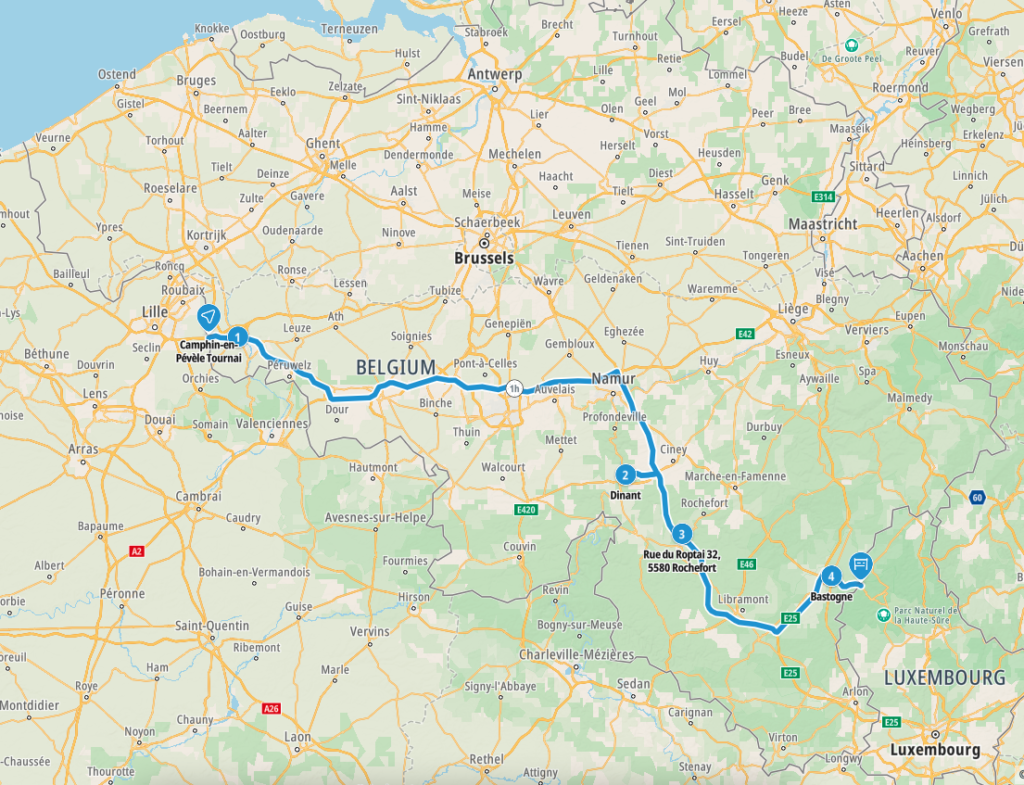
This is a map of our road trip through Belgium in 2023.
Our route took us through Tournai – Ave-et-Auffe – Dinant – Bastogne
Our favourite places in Belgium
These are some of the best places that we explored on our road trip through Belgium. We’ve put them in alphabetical order.
We really like Belgium, it’s so familiar, in terms of its western culture and the general feel of the place. Several of the cities in Belgium are very similar to those in the UK in our opinion. However the Ardennes is like the Lake District but even posher!
Ave-et-Auffe
Ave-et-Auffe is a small village in the Walloon region of Belgium, located in the province of Namur, with a population of approximately 300 residents. Nestled in the picturesque Ardennes, the village is known for its serene landscapes, including lush forests and rolling hills. We stayed at the campsite Camping Le Roptai, which offers a peaceful retreat with amenities for camping, caravanning, and hiking.
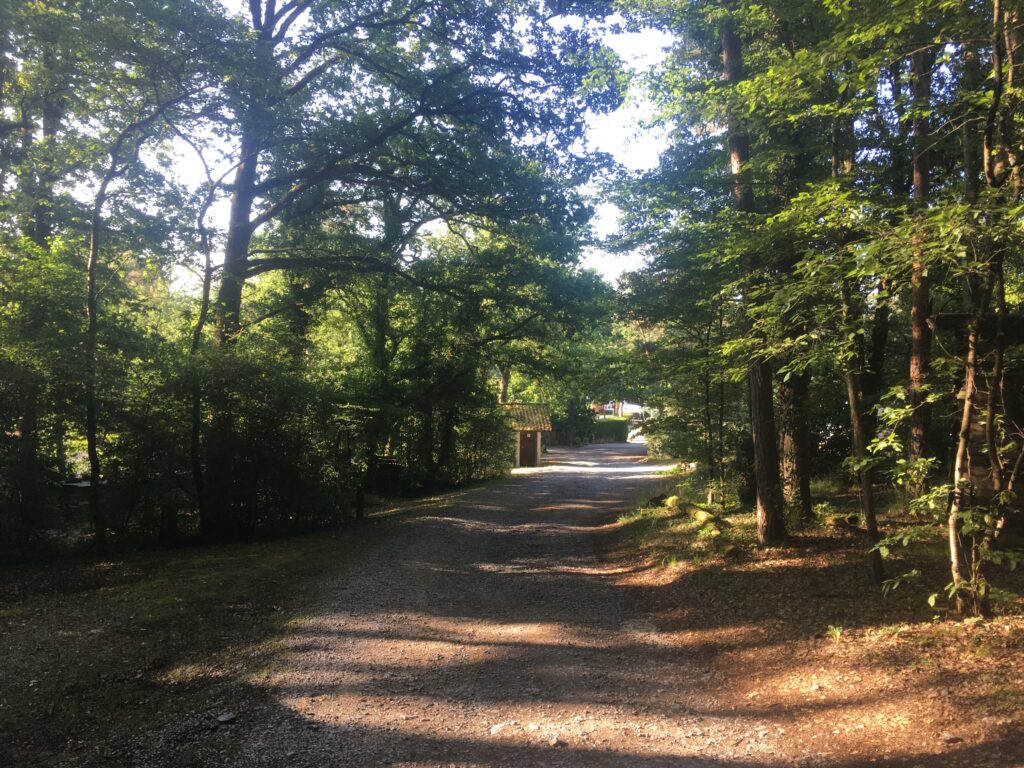
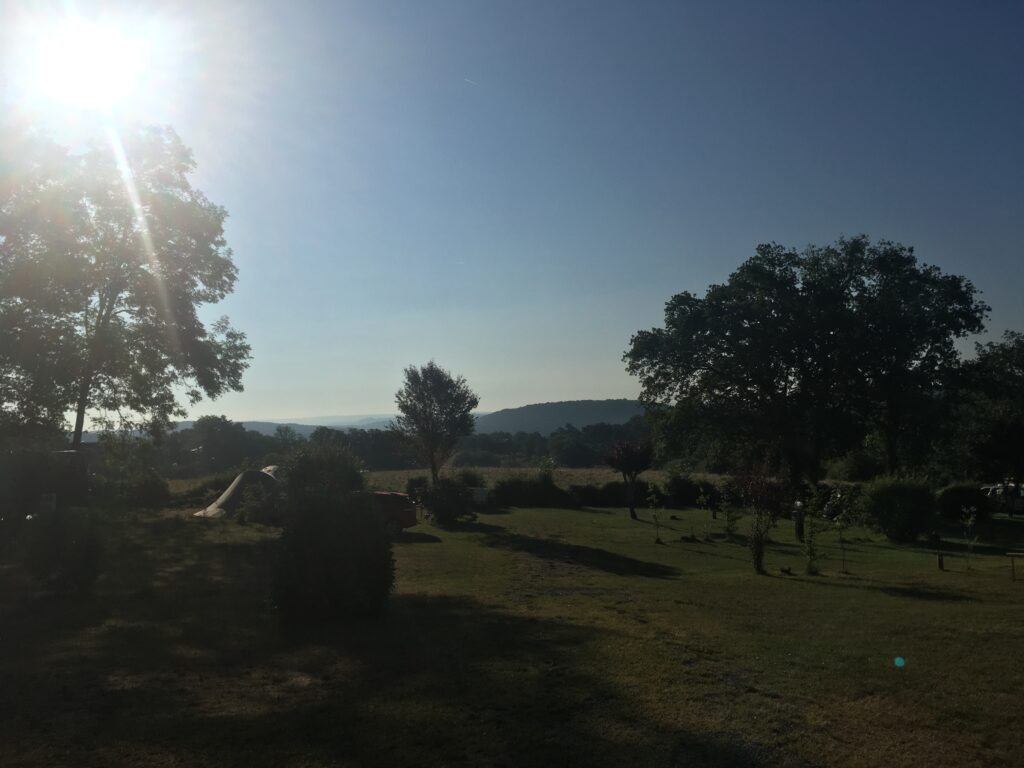
Bastogne, Wallonia
Bastogne is a historic town in the Walloon region of Belgium, close to Luxembourg. Known worldwide for its pivotal role during the Battle of the Bulge in World War II, Bastogne has become a symbol of resilience. The town is home to the Bastogne War Museum and the Mardasson Memorial, both honoring the American soldiers who fought there.
If you have a penchant for the history of WWII, check out this tank in the town centre! This one was shelled several times, and knocked out in December 1944 – you can see one of the hits here! As noted earlier, Belgium has often been the battleground of European powers, earning the nickname ‘the Battlefield of Europe’.
Surrounded by scenic Ardennes forests, Bastogne also offers beautiful hiking trails and picturesque views. With its rich history and its charming medieval atmosphere, Bastogne is great for history buffs and nature lovers alike.
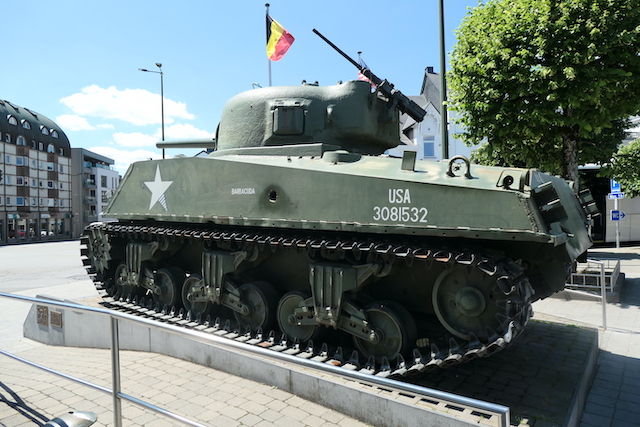

Bruges – West Flanders
Bruges is a beautiful, medieval city in Belgium, famed for its canals, cobblestone streets, and historic architecture. Known for its picturesque Market Square and the stunning Belfry Tower, Bruges offers a perfect blend of history and charm. The city gained international fame as the setting for the dark comedy film In Bruges (2008), starring Colin Farrell and Brendan Gleeson. The movie showcases the city’s romantic yet eerie atmosphere, with many scenes filmed against the backdrop of its iconic landmarks. Whether strolling along the canals, exploring museums, or enjoying Belgian chocolates, Bruges provides a memorable experience for anyone visiting.
Despite being such a famous city, the population of Bruges is quite small by UK standards, standing at less than 120,000 people (2022). Because of this, it’s a really easy and relaxing city to get about in. Accommodation and parking is also widely accessible – surprisingly, even during Christmas time.
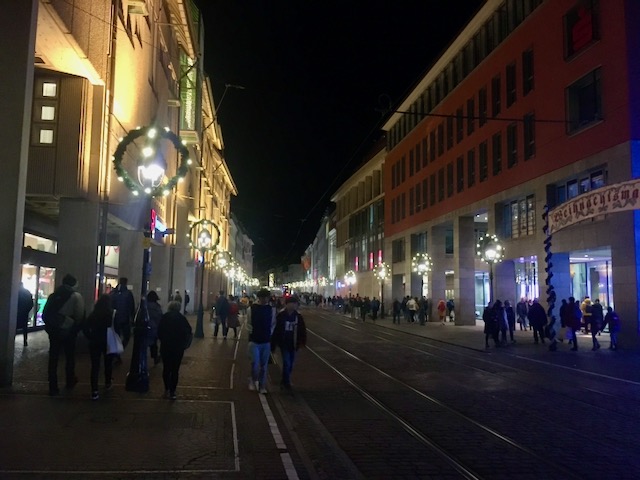
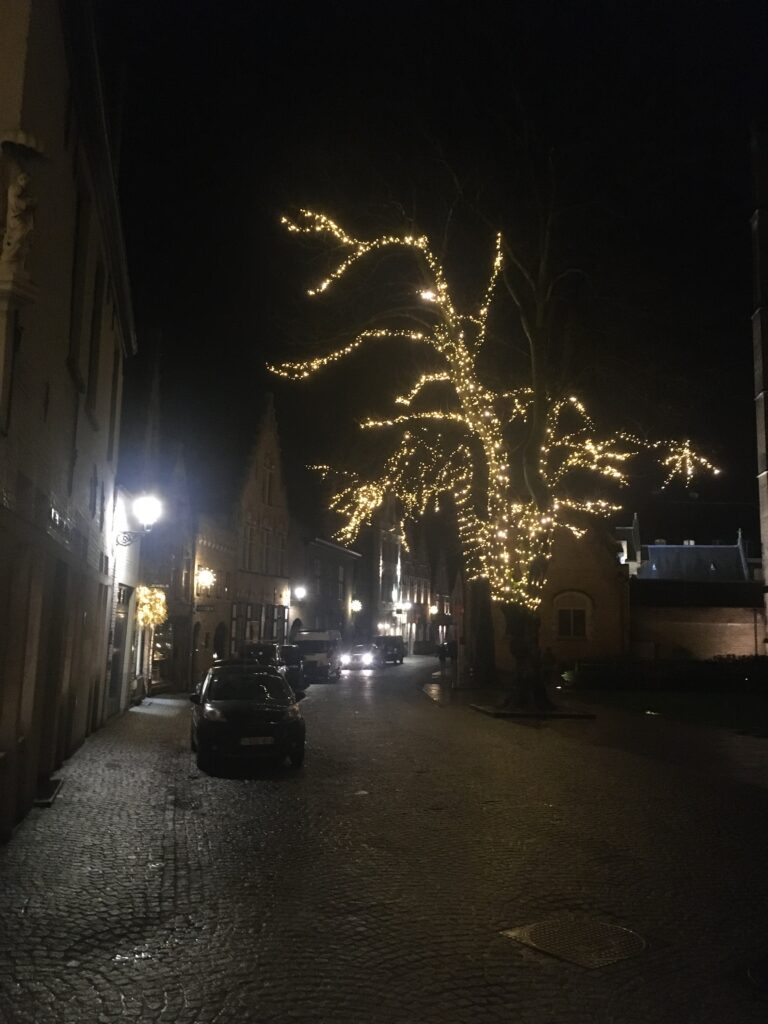
Dinant and Namur, Wallonia
In case you’re wondering, Wallonia is one of three regions in Belgium, along with Brussels and Flanders. It’s here that the Ardennes forest is mostly situated. Namur is the capital of Wallonia, although it’s not the largest town in the area. People mostly speak French in both Dinant and Namur – Dinant is only a few miles from the French border. Dinant is a particularly picturesque town, being situated on a river with a large rocky backdrop. We’ve got more in our blog on Dinant if you’re interested.
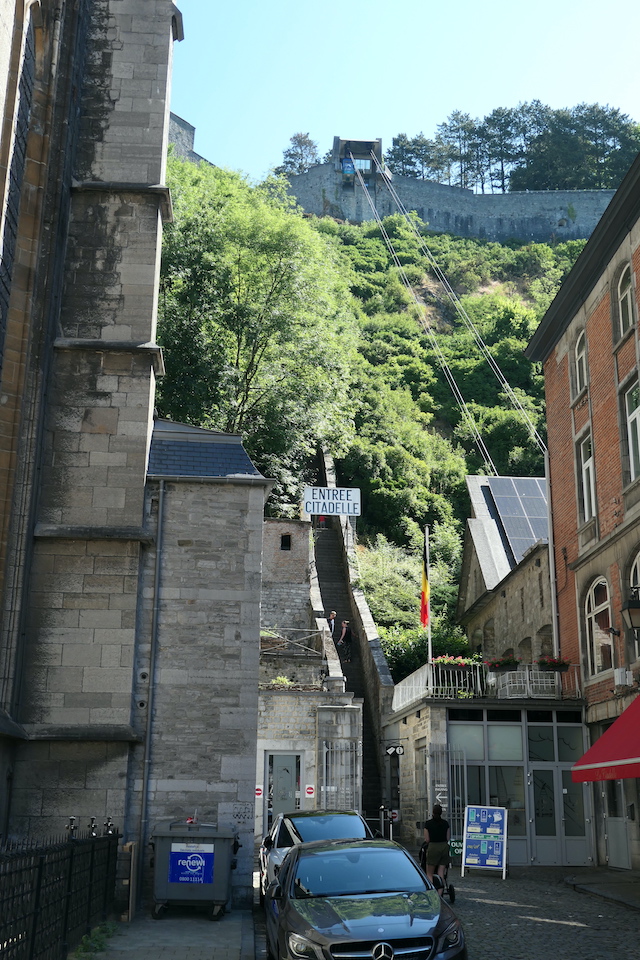
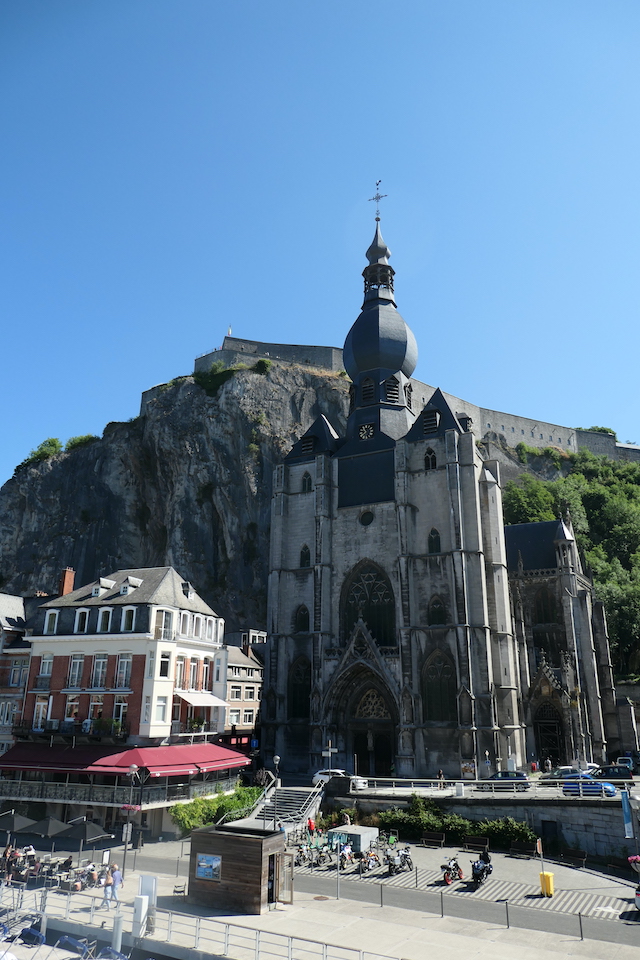
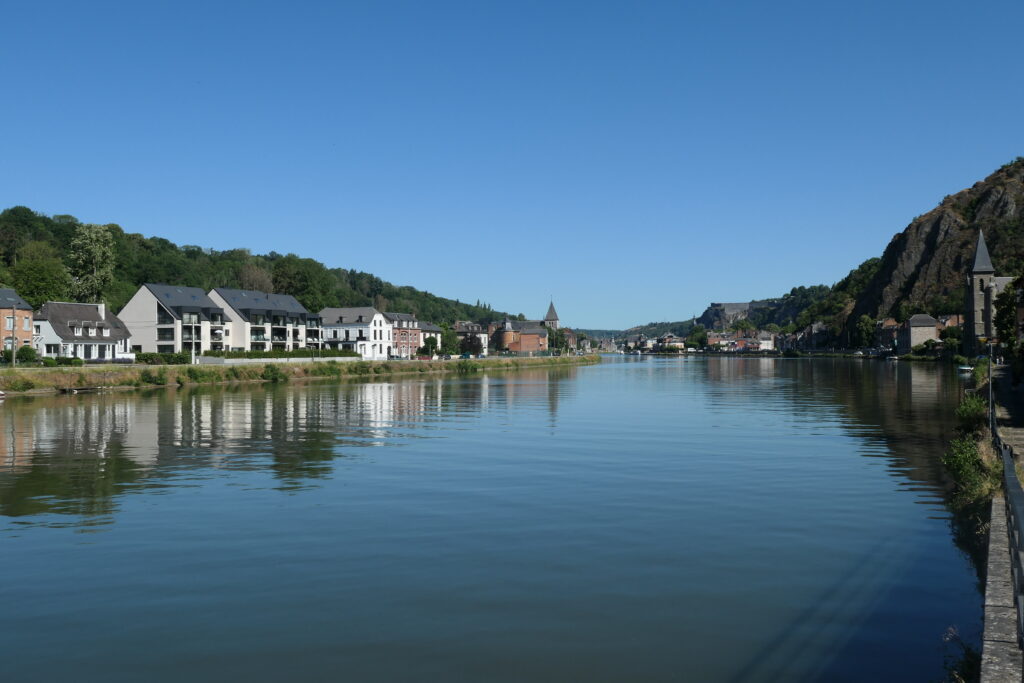
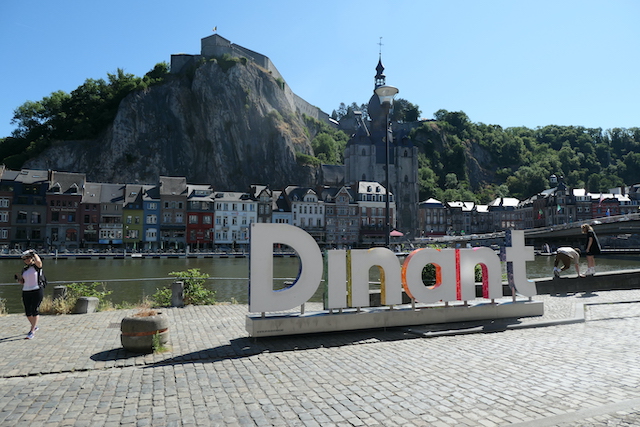
What’s it like to drive in Belgium?
They drive on the right hand side of the road in Belgium. Having driven through the entire width of Belgium, we’ve added some more context in the blog which you might find useful.
We’ve driven in, around and throughout the country for many years now, and we can safely say that it’s very similar to driving in the UK, just on the opposite side of the road! They have the same amount of crazy-horse drivers, whilst most drivers are pretty courteous really!
The Belgians do tend to drive quickly on the motorways, especially if they’re trying to escape rush hour. Road signage is great, so it’s really easy to find your way about. That said, don’t take a wrong turning from the ring-road into Brussels during rush hour – else you’ll be stuck for ages 😉
Do you require an international driving permit in Belgium?
We’ve created a dedicated page to driving abroad, which answers this question, and more, which you might find helpful.
Can you use your UK driving license when driving through Belgium?
We’ve created a dedicated page to driving abroad, which answers this question, and more, which you might find helpful.
Do I need a carnet de passages to drive in Belgium?
We’ve created a dedicated page to driving abroad, which answers this question, and more, which you might find helpful.
What are the speed limits in Belgium?
The speed limits for cars are:
- 15 mph (20 km/h) for urban driving
- 30 mph (50 km/h) outside of built up areas
- 55mph (90 km/h) on dual carriageways
- 75 mph (120 km/h) on motorways
What currency do they use in Belgium?
In Belgium they use the Euro. The use of credit / debit cards is now widespread. Travellers cheques are accepted. There are lots of ATMs.
You should make yourself aware of the amount that your bank charges you for using credit and debit cards abroad. Often credit cards are cheaper for purchasing items directly, and for withdrawing cash from ATMs.
What language do they speak in Belgium?
They speak three languages in Belgium – French, German, and Dutch, depending on which area you are in. The Flemish Region (to the north) and Brussels speak Dutch. The region of Wallonia (to the south) and Brussels speak French. A smaller minority speak German. We’ve found that English is widely spoken.
What time zone is Belgium in?
Remember, when you’re planning your next trip to take a look at what time zone it’s in.
Do I need a visa to visit Belgium?
We’ve created a dedicated, more comprehensive page on visas, which you should find helpful. Check it out!
Is wild camping legal in Belgium?
No, wild camping is illegal in Belgium.
What plug / socket type do they use in Belgium?

In Belgium they use plug / socket type E.
Health issues in Belgium
Is it safe to drink water in Belgium?
Yes, it is safe to drink tap water in Belgium. Bottled water is also readily available across the country.
What vaccinations are required for Belgium?
This NHS website is kept up to date with all relevant information on vaccinations in Belgium.
Phones in Belgium
What is the country calling code for Belgium?
The country calling code for Andorra is +32
What are the emergency phone numbers in Belgium?
- The emergency number for police is: 101 / 112
- For ambulances, the emergency number for ambulance is: 112
- The emergency number for fire is: 112
If you’ve got some useful info that you’d like to share, let us know!
Don’t forget to check out all the other pictures!
